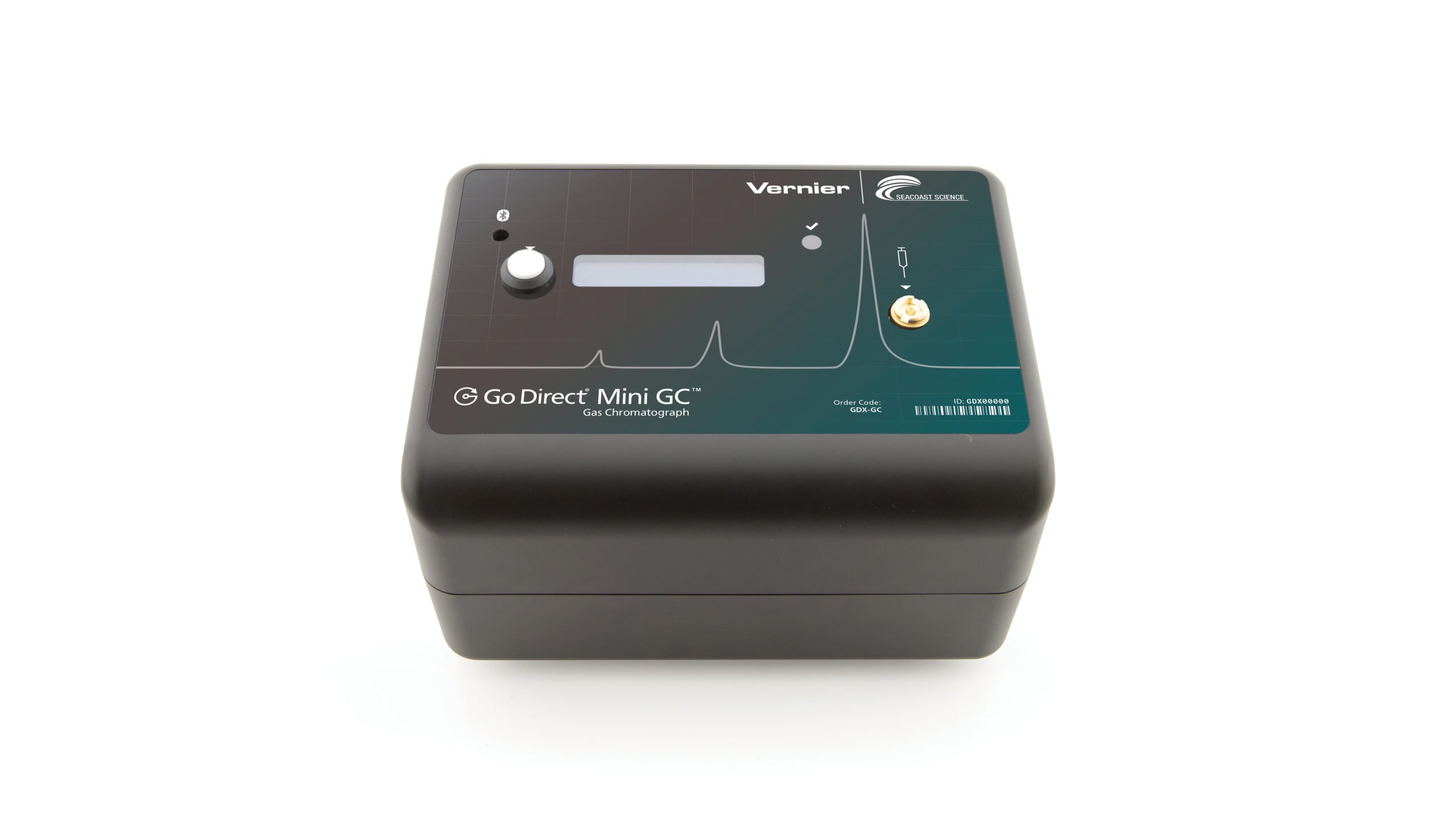- If you have the Mini GC Plus, see Mini GC Plus Gas Chromatograph Troubleshooting and FAQs
- If you have the original Mini GC, see Mini Gas Chromatograph Troubleshooting and FAQs
Troubleshooting
General: Press the power button on the sensor to turn it on. Connect your sensor as described in the Getting Started instructions for your device.
COMMON ISSUES
- Inconsistent Flow
⚬ Likely Cause: Worn or damaged septum.
⚬ Solution: Replace the septum. - Inconsistent Peak Areas
⚬ Likely Cause: Irregular injection volume or worn septum.
⚬ Solution: Check your injection technique and replace the septum. - No Communication
⚬ Likely Cause: Software mismatch or cable/Bluetooth connection.
⚬ Solution: Be sure you’re using Instrumental Analysis software. Check USB cables or verify Bluetooth pairing. - No Power
⚬ Likely Cause: Power cord or switch issue.
⚬ Solution: Confirm that power plugs are fully inserted and the switch is turned on.
General Use Tips
- Use Approved Compounds Only: Always refer to the list of acceptable compounds in the user guide before injecting new samples.
- Avoid High-Water Samples: Do not inject samples that contain more than 5% water. Water can damage the detector.
- Hamilton Syringe Note: The syringe shipped with the device has a brown bumper on the needle. Do not remove this bumper—it protects the injection port.
Also see Best Practice Techniques for Vernier gas chromatographs
Top Questions
Additional Troubleshooting
- How is the Go Direct Mini GC different than previous versions of the Mini GC?
- Go Direct Mini GC Compound Library
- Best Practice Techniques for Vernier gas chromatographs
- Can I inject water into Vernier gas chromatographs?
- Can I inject a gas into the Vernier gas chromatographs?
- What size needle do Vernier gas chromatographs require?
- Where can I order the syringe for Vernier gas chromatographs?
- The peak heights on my Vernier gas chromatograph are lower than they were previously.
- My Vernier gas chromatograph pressure won't get above 15 kPa.
- I need to ship a Vernier gas chromatograph to Vernier for repair. How should I package it?
- Can I purchase a replacement power supply for my Vernier gas chromatograph?
- My Go Direct Mini GC displays "Error 2"
Specifications
- Column: Restek MXT-502.2 Column
⚬ Siltek-treated stainless steel with proprietary diphenyl/dimethyl polysiloxane phase - Column operating temperature: 30°C to 160°C
⚬ maximum heating ramp: 10°C/min - Detector: Seacoast Science carbon-nanotube chemiresistive detector
- Carrier gas: Ambient air
- Operating pressure: 1 to 21 kPa (above ambient pressure)
- Environmental conditions
⚬ Temperature: 5°C to 40°C
⚬ Humidity: 95% or less (non-condensing environment) - Liquid injection volume: 0.01 to 0.6 µL
- Dimensions: 108 mm height, 191 mm length, 133 mm width
⚬ Weight: 1.3 kg - Power Requirements: 24 VDC, 2.5 A from an external power supply
- Utility: External power supply rated for 100–240 VAC, 1.5 A 50–60 Hz
- Connections:
⚬ Wireless: Bluetooth® v4.2 (wireless range 30 m unobstructed)
⚬ Wired: USB 2.0 full speed
Related Products
- Mini USB-C Cable (
CB-USB-C-MINI )
Replacement Parts
- GC Septa (package of 4) (
GC-SEP ) - Mini GC 1 μL Hamilton Syringe (
GC-SYR-MIC ) - Mini USB Cable (
CB-USB-MINI ) - Replacement Power Supply for Vernier Mini Gas Chromatographs (
GC2-MINI-PS )
For column and/or sensor replacement, email chemistry@vernier.com for assistance.

